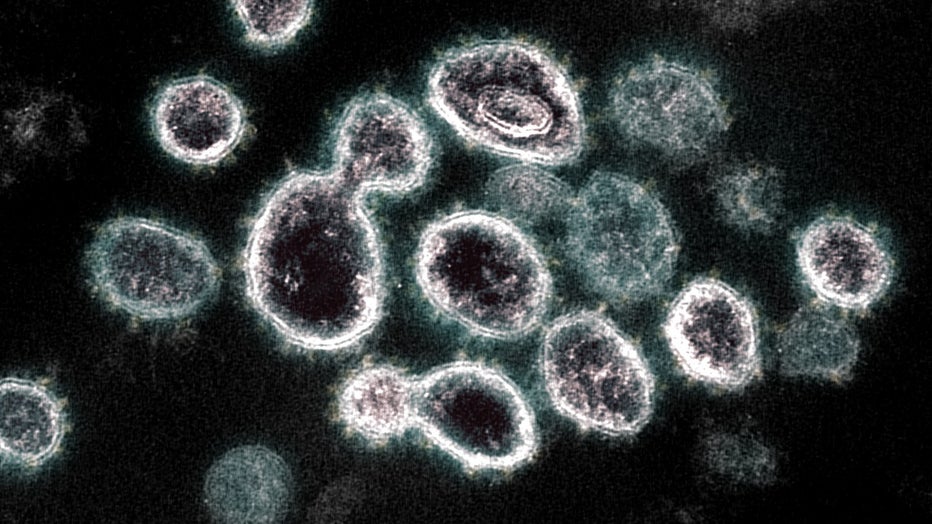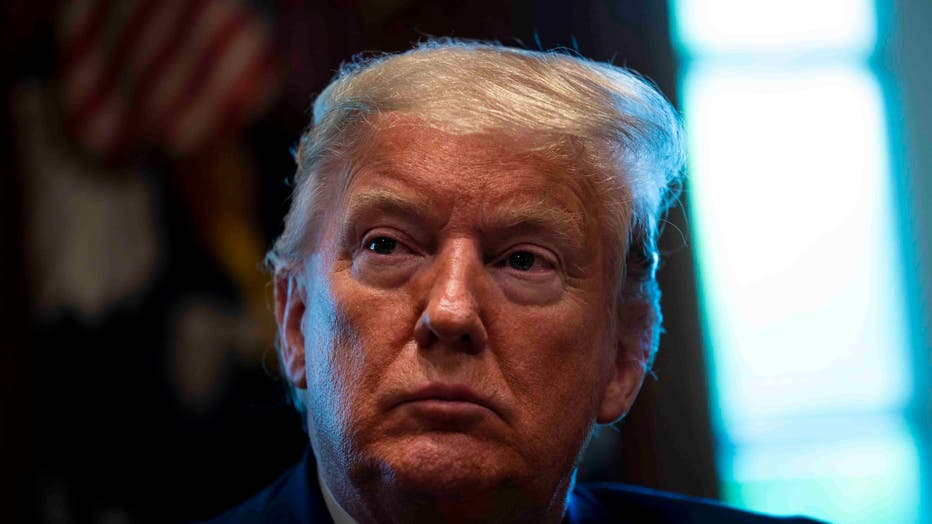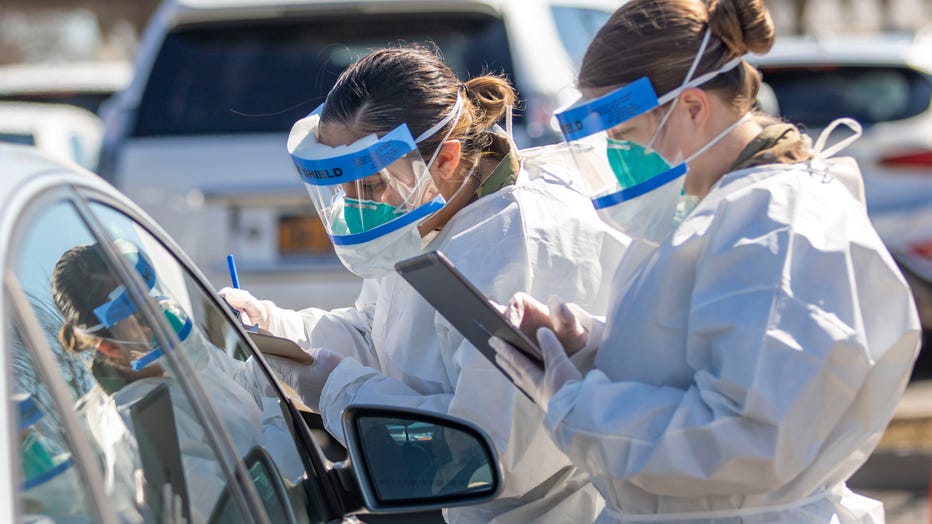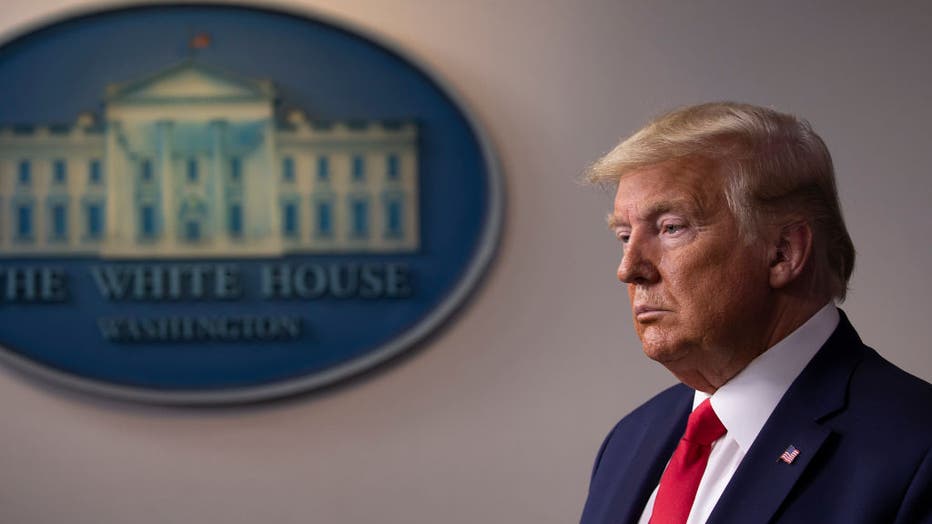Report: US wasted months before preparing for pandemic

White House Coronavirus Task Force Update
President Donald Trump and the White House Coronavirus Task Force provided an update to members of the media on Saturday, April 4, 2020.
WASHINGTON - As the first alarms sounded in early January that an outbreak of a novel coronavirus in China might ignite a global pandemic, the Trump administration squandered nearly two months that could have been used to bolster the federal stockpile of critically needed medical supplies and equipment.
A review of federal purchasing contracts by The Associated Press shows federal agencies waited until mid-March to begin placing bulk orders of N95 respirator masks, mechanical ventilators and other equipment needed by front-line health care workers.
By that time, hospitals in several states were treating thousands of infected patients without adequate equipment and were pleading for shipments from the Strategic National Stockpile. That federal cache of supplies was created more than 20 years ago to help bridge gaps in the medical and pharmaceutical supply chains during a national emergency.
Now, three months into the crisis, that stockpile is nearly drained just as the numbers of patients needing critical care is surging. Some state and local officials report receiving broken ventilators and decade-old dry-rotted masks.
“We basically wasted two months,” Kathleen Sebelius, health and human services secretary during the Obama administration, told AP.

(Photo by MLADEN ANTONOV/AFP via Getty Images)
As early as mid-January, U.S. officials could see that hospitals in China’s Hubei province were overwhelmed with infected patients, with many left dependent on ventilator machines to breathe. Italy soon followed, with hospitals scrambling for doctors, beds and equipment.
HHS did not respond to questions about why federal officials waited to order medical supplies until stocks were running critically low. But President Donald Trump has asserted that the federal government should take a back seat to states when it comes to dealing with the pandemic.
Trump and his appointees have urged state and local governments, and hospitals, to buy their own masks and breathing machines, saying requests to the dwindling national stockpile should be a last resort.
“The notion of the federal stockpile was it’s supposed to be our stockpile,” Jared Kushner, the president’s son-in-law and adviser, said at a White House briefing Thursday. “It’s not supposed to be state stockpiles that they then use.”

This transmission electron microscope image shows SARS-CoV-2, the virus that causes COVID-19. (NIAID-RML)
Experts in emergency preparedness and response have expressed dismay at such statements, saying the federal government must take the lead in ensuring medical supplies are available and distributed where they are needed most.
“States do not have the purchasing power of the federal government. They do not have the ability to run a deficit like the federal government. They do not have the logistical power of the federal government,” said Sebelius, who served as governor of Kansas before running the nation’s health care system.
Because of the fractured federal response to COVID-19, state governors say they’re now bidding against federal agencies and each other for scarce supplies, driving up prices.
“You now literally will have a company call you up and say, ‘Well, California just outbid you,’” Gov. Andrew M. Cuomo, D-N.Y., said Tuesday. “It’s like being on eBay with 50 other states, bidding on a ventilator.”

Soldiers from the Massachusetts National Guard provide aid to hospital staff amid the coronavirus pandemic. (Massachusetts National Guard photo by Army Spc. Samuel D. Keenan)
For nearly a month, Trump rebuffed calls from Cuomo and others to use his authority under the Defense Production Act to order companies to increase production of ventilators and personal protective equipment. He suggested the private sector was acting sufficiently on its own.
More than three months after China revealed the first COVID-19 cases, Trump finally relented last week, saying he will order companies to ramp up production of critical supplies. By then, confirmed cases of COVID-19 within the United States had surged to the highest in the world. Now, the number of people infected in the U.S. has climbed to more than 300,000 and deaths have topped 8,400.
Trump spent January and February playing down the threat from the new virus. He derided warnings of pandemic reaching the U.S. as a hoax perpetrated by Democrats and the media. As the World Health Organization declared the outbreak a global public health emergency on Jan. 30, Trump assured the American people that the virus was “very well under control” and he predicted “a very good ending.”
His administration was so confident that Secretary of State Mike Pompeo announced on Feb. 7 that the government had airlifted nearly 18 tons of respirator masks, surgical masks, gowns and other medical supplies to China.

WASHINGTON, DC - APRIL 03: U.S. President Donald Trump listens during a roundtable meeting with energy sector CEOs in the Cabinet Room of the White House April 3, 2020 in Washington, DC. Oil companies have been negatively impacted by both the effects
On Feb. 24, the White House sent Congress an initial $2.5 billion funding request to address the coronavirus outbreak. The next day, federal health experts at the Centers for Disease Control and Prevention warned that the virus was spreading quickly in the U.S. and predicted that disruptions to daily life could be “severe,” including school and business closures.
Unfazed, HHS Secretary Alex Azar told lawmakers on Feb. 27 that “the immediate risk to the American public remains low.”
During those crucial early weeks when the U.S. could have been tracking the spread of the disease and containing it, hardly anyone was being tested after a series of federal blunders led to a shortage of tests and testing capacity, as AP reported last month.
Without data showing how widespread the disease was, federal and state governments failed to prepare.

(U.S. Army National Guard photo by Sgt. Amouris Coss)
By the middle of March, hospitals in New York, Seattle and New Orleans were reporting a surge in sick patients. Doctors and nurses took to social media to express their alarm at dwindling supplies of such basic equipment as masks and gowns.
Trump accused some Democratic governors of exaggerating the need and derided those that criticized the federal response as complainers and snakes.
“I want them to be appreciative,” Trump said on March 27.
At the start of the crisis, an HHS spokeswoman said the Strategic National Stockpile had about 13 million N95 respirator masks, which filter out about 95% of all liquid or airborne particles and are critical to prevent health care workers from becoming infected. That’s just a small fraction of what hospitals need to protect their workers, who normally would wear a new mask for each patient, but who now are often issued only one to last for days.

A group of Boston nurses are urging people to stay home amid the COVID-19 pandemic. (Credit: russelg_/Instagram)
Trump during a White House briefing on March 26 claimed that he had inherited an “empty shelf” from the Obama administration, but added that “we’re really filling it up, and we fill it up rapidly.”
Federal purchasing records, however, show the Trump administration delayed ordering additional supplies until the virus had taken root and was spreading.
HHS first announced its intent to purchase 500 million N95 masks on March 4, with plans to distribute them over the next 18 months. The following day, Congress passed an $8.3 billion coronavirus spending bill, more than three times what the White House had originally asked for.

President Donald Trump listens during the daily coronavirus briefing in the James Brady Press Briefing Room at the White House. (Photo by Tasos Katopodis/Getty Images)

